Subscriber Exclusive
Do You Know Where Your Wool Comes From?
How can you know where the wool in your yarn was grown and processed, and why is it important? Several programs let you trace the sources of the skeins you knit.
How can you know where the wool in your yarn was grown and processed, and why is it important? Several programs let you trace the sources of the skeins you knit. <a href="https://farmfiberknits.com/do-you-know-where-your-wool-comes-from/">Continue reading.</a>
https://farmfiberknits.com/cdn-cgi/image/format=auto/https://www.datocms-assets.com/101500/1728497398-sheep-grazing-in-field-with-mountains.jpg?auto=format&w=900
Over the past 10 years, there has been a growing awareness of the impact of clothing production on the planet. Concerned consumers are demanding that fashion brands disclose details about their supply chain, from working conditions in sewing factories and fabric mills to the source of the raw fibers and other materials in their products.
It’s no surprise that these concerns have spread to handknitting yarns. The label on a skein of yarn indicates the country of origin (as required by law), but that is usually the country where the yarn was spun and not necessarily where the fiber was grown or processed. How can you learn more about where the wool in your yarn comes from?
Let’s look at the current options for tracing the source of wool in the handknitting-yarn supply chain.
How Is Wool Traced?
Tracing synthetic fibers is relatively simple. A unique chemical identifier can be added to the manufacturing process, then verified through testing at every stage in the yarn- or garment-production process.
Tracing wool is a different story. There is no practical way to embed a unique marker in the fleece on the sheep. Markers applied to the surface of the fiber are likely to be lost during scouring, carding, spinning, and dyeing.
Wool traceability is dependent on certification and third-party verification of every step in the supply chain—from the rancher, to the scouring mill, to the spinning mill, to the dyehouse. There are two certifications you’re most likely to see mentioned in connection with handknitting yarn: Responsible Wool Standard (RWS) and NATIVA. You may also see yarn labeled with the Wooltrace or American Wool Assurance certificates. These smaller programs are just beginning to show up in handknitting yarn.
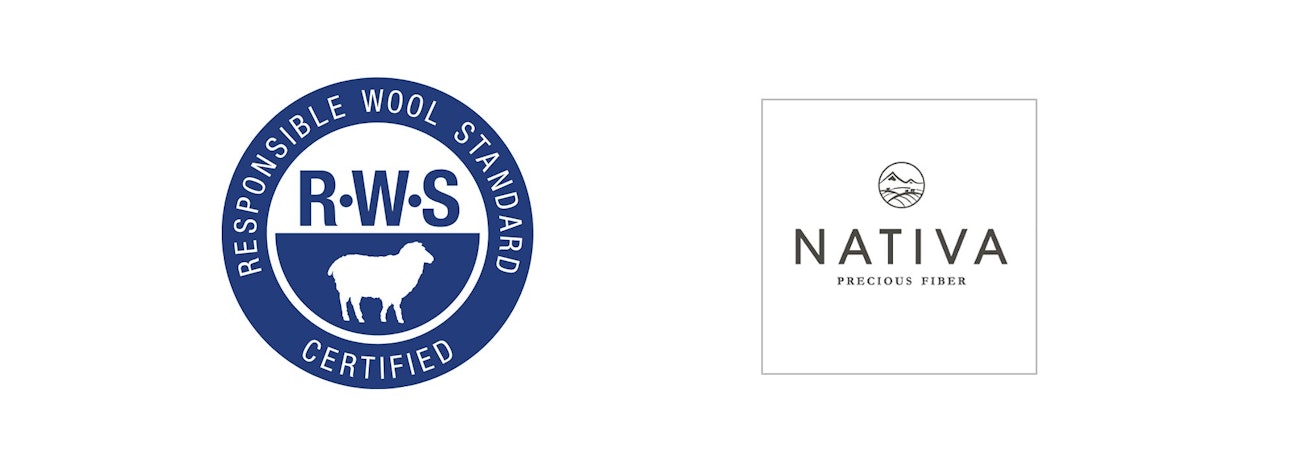 Look for the RWS or NATIVA logo on the skeins of yarn you purchase.
Look for the RWS or NATIVA logo on the skeins of yarn you purchase.
Responsible Wool Standard
Responsible Wool Standard is a program developed by Textile Exchange, a global nonprofit working to ensure that the materials used to produce textiles and fashion are produced in a way that supports the planet, its ecosystems, and its communities. Textile Exchange also offers Responsible Mohair Standard and Responsible Alpaca Standard certifications following the same principles.
The RWS sets criteria for animal welfare, land management, and worker health and safety. A third-party certification body inspects the ranch, mill, or factory for compliance with these criteria and conducts annual recertification audits. The certification body also issues “transaction certificates” every time products are shipped from one step in the supply chain to another, verifying the chain of custody.
For a skein of yarn to bear the RWS seal, each stage in the supply chain must be certified, including the
SUBSCRIBER EXCLUSIVE
Over the past 10 years, there has been a growing awareness of the impact of clothing production on the planet. Concerned consumers are demanding that fashion brands disclose details about their supply chain, from working conditions in sewing factories and fabric mills to the source of the raw fibers and other materials in their products.
It’s no surprise that these concerns have spread to handknitting yarns. The label on a skein of yarn indicates the country of origin (as required by law), but that is usually the country where the yarn was spun and not necessarily where the fiber was grown or processed. How can you learn more about where the wool in your yarn comes from?
Let’s look at the current options for tracing the source of wool in the handknitting-yarn supply chain.
How Is Wool Traced?
Tracing synthetic fibers is relatively simple. A unique chemical identifier can be added to the manufacturing process, then verified through testing at every stage in the yarn- or garment-production process.
Tracing wool is a different story. There is no practical way to embed a unique marker in the fleece on the sheep. Markers applied to the surface of the fiber are likely to be lost during scouring, carding, spinning, and dyeing.
Wool traceability is dependent on certification and third-party verification of every step in the supply chain—from the rancher, to the scouring mill, to the spinning mill, to the dyehouse. There are two certifications you’re most likely to see mentioned in connection with handknitting yarn: Responsible Wool Standard (RWS) and NATIVA. You may also see yarn labeled with the Wooltrace or American Wool Assurance certificates. These smaller programs are just beginning to show up in handknitting yarn.
 Look for the RWS or NATIVA logo on the skeins of yarn you purchase.
Look for the RWS or NATIVA logo on the skeins of yarn you purchase.
Responsible Wool Standard
Responsible Wool Standard is a program developed by Textile Exchange, a global nonprofit working to ensure that the materials used to produce textiles and fashion are produced in a way that supports the planet, its ecosystems, and its communities. Textile Exchange also offers Responsible Mohair Standard and Responsible Alpaca Standard certifications following the same principles.
The RWS sets criteria for animal welfare, land management, and worker health and safety. A third-party certification body inspects the ranch, mill, or factory for compliance with these criteria and conducts annual recertification audits. The certification body also issues “transaction certificates” every time products are shipped from one step in the supply chain to another, verifying the chain of custody.
For a skein of yarn to bear the RWS seal, each stage in the supply chain must be certified, including the[PAYWALL] company selling the yarn and its warehouse. The costs of third-party certification, including fees for annual audits and transaction certificates, are paid by the wool grower or farm group, mill, factory, or brand.
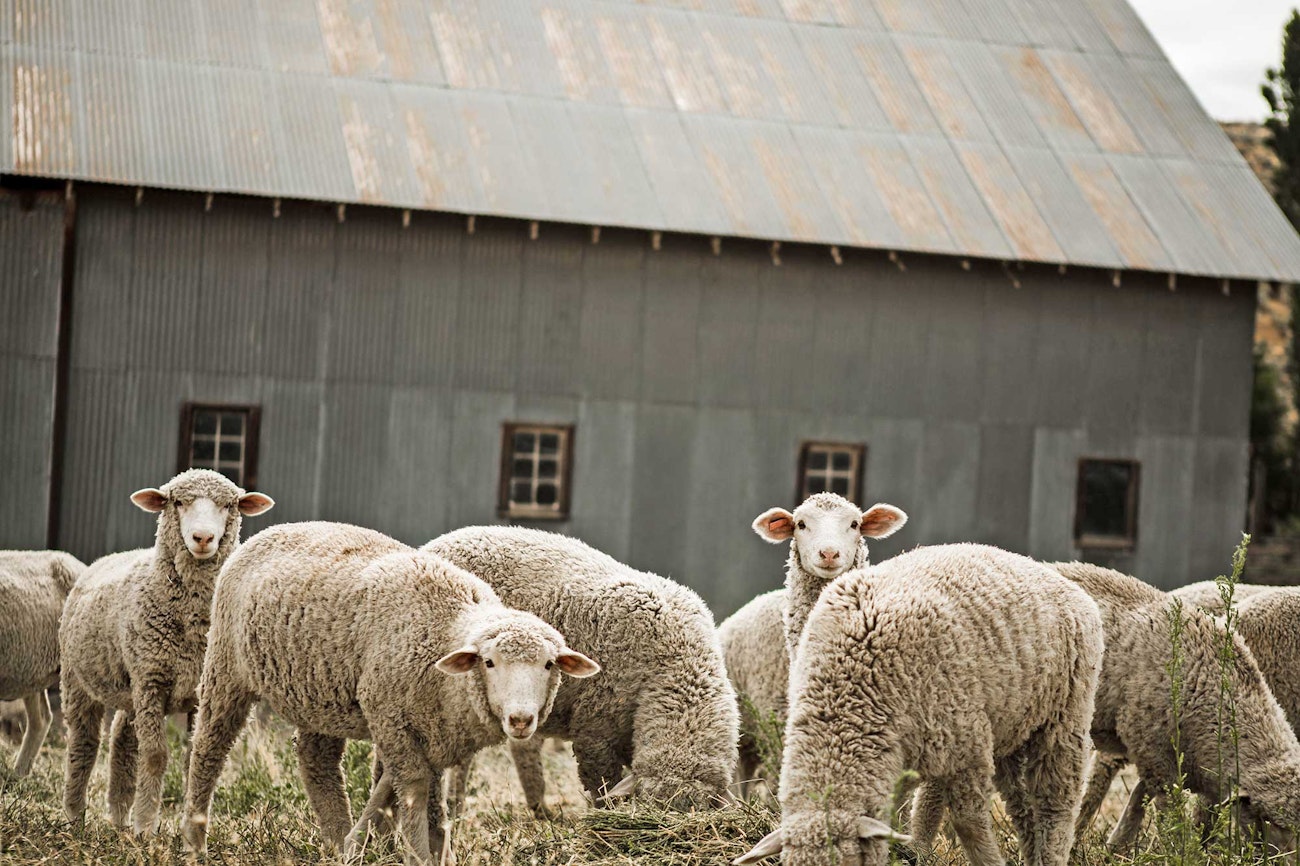 Shaniko wool is certified under both the RWS and NATIVA programs. Photo courtesy of Shaniko Wool Company
Shaniko wool is certified under both the RWS and NATIVA programs. Photo courtesy of Shaniko Wool Company
NATIVA
NATIVA is a program developed by Chargeurs Group, a global industrial company that operates one of the largest wool-processing facilities in the United States. The NATIVA Protocol certifies every step in the supply chain, ensuring animal welfare, land management and environmental protection, and corporate social responsibility. NATIVA has certified wool growers in Argentina, Australia, Uruguay, and the United States.
The NATIVA program uses blockchain technology to track each bale of certified wool from the farm all the way to the weaving or knitting factory.
As with RWS, certification by NATIVA requires third-party verification and periodic audits, the cost of which is borne by the farm or farm group, mill, factory, or brand.
Wooltrace
If you’re shopping for wool from Great Britain, you may see Wooltrace on the label. Introduced in 2022 by Laxtons, a spinning mill located at the heart of England’s historic wool-producing districts, Wooltrace is a program dedicated to traceable British wool.
Through the Wooltrace program, Laxtons partners with British farmers to provide a fair price for their wool crop and encourage responsible land stewardship and animal welfare. Each skein of yarn is traceable back to the farm of origin by entering the skein’s batch code in the Wooltrace Farm Finder website. By handling all production and processing within the UK, Wooltrace yarns have an enviably short supply chain and small carbon footprint.
American Wool Assurance
The American Wool Assurance program was developed by the American Sheep Industry Association with the assistance of the Animal Sciences department at Colorado State University. Unlike the other programs discussed here, American Wool Assurance (AWA) is focused solely on animal welfare and wool production. They do not certify processing or spinning mills.
The AWA program includes education in sheep care and the management of wool production operations. Independent evaluations and periodic audits are required to use the AWA mark on wool bales.
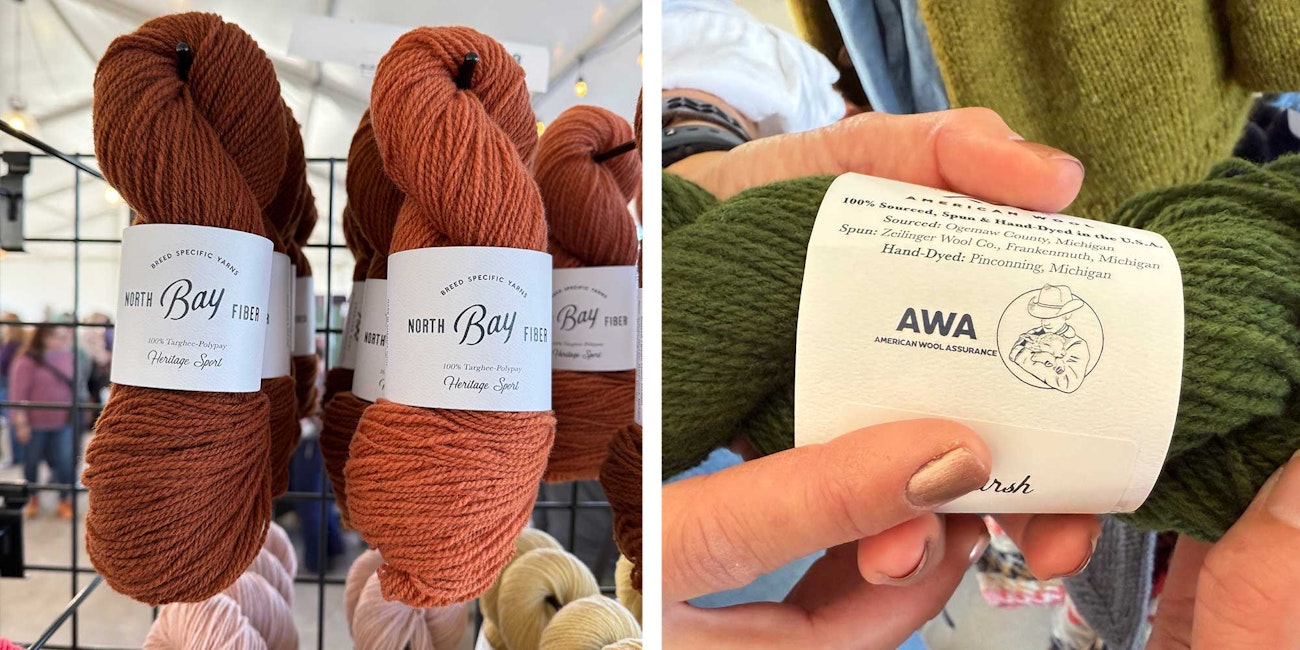 North Bay Fiber now includes the AWA (American Wool Assurance) logo. Photo by Kate Larson
North Bay Fiber now includes the AWA (American Wool Assurance) logo. Photo by Kate Larson
How to Shop for Traceable Wool
Look for the mark of one of these certification organizations, which might be stated or include a logo. Here are a few to look out for:
Shaniko wool is certified under both the RWS and NATIVA programs and can be found in Knit Picks’ High Desert yarn line. Many hand-dyers also offer Shaniko wool yarn and combed top. Undyed Shaniko wool yarn and top are available from Meridian Mill House.
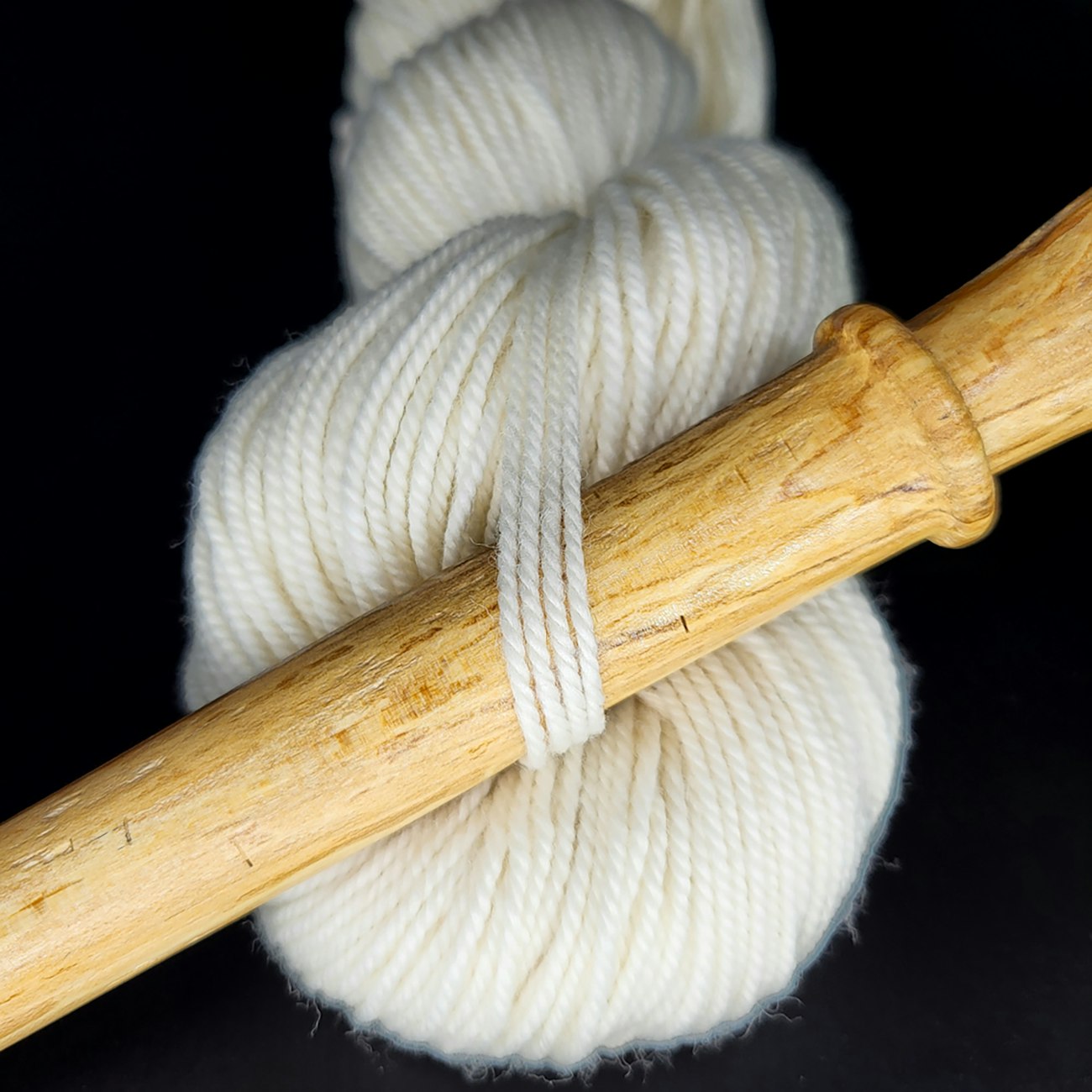 Rodanthe is a worsted-weight non-superwash yarn using Shaniko Wool that is produced by Meridian Mill House. Photo courtesy of Meridian Mill House
Rodanthe is a worsted-weight non-superwash yarn using Shaniko Wool that is produced by Meridian Mill House. Photo courtesy of Meridian Mill House
Wooltrace yarn is available directly from the mill’s own webstore, byLaxtons, and through select independent yarn stores worldwide.
American Wool Assurance certified yarn is available primarily through small yarn companies specializing in breed-specific yarns. North Bay Fiber is one such company. You can purchase yarns made with AWA wool via their website.
Traceability on a Smaller Scale
You can also buy traceable wool by shopping close to the farm. Some wool growers, such as Morehouse Farm, work directly with small wool mills to produce yarn using only the wool from their own sheep, then sell that yarn directly to consumers.
Some wool mills and yarn companies, such as Mountain Meadow Wool, have close relationships with a small group of sheep ranchers and can tell you which farms grew the wool that went into your yarn.
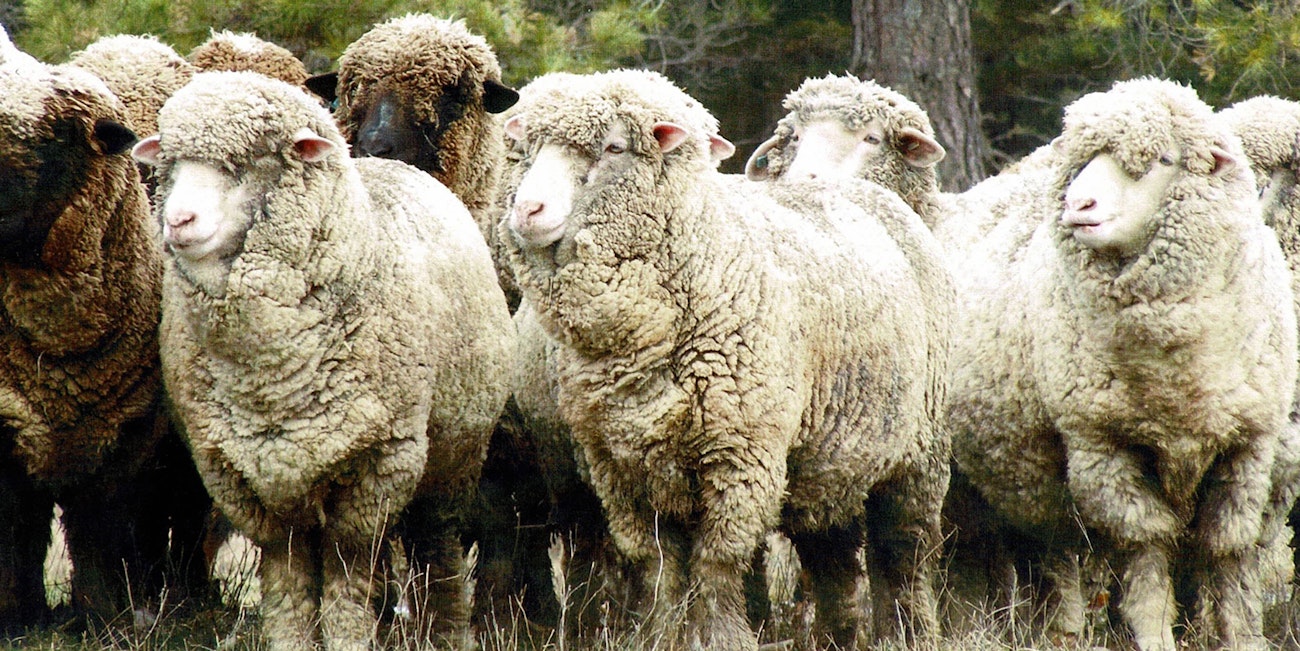 Merino sheep at Morehouse Farm, a mainstay of fine wool and knitting yarns in New York’s Hudson Valley. Photo courtesy of Morehouse Farm
Merino sheep at Morehouse Farm, a mainstay of fine wool and knitting yarns in New York’s Hudson Valley. Photo courtesy of Morehouse Farm
Making Choices
Supporting the farmers, mills, and yarn companies that do the work of producing yarn can make a positive impact on the animals, land, and people involved. Whether you shop for yarn produced under a certification program, or you purchase yarn from a small producer close to the farm, I hope you’ll join me in learning more about the natural fibers we use!
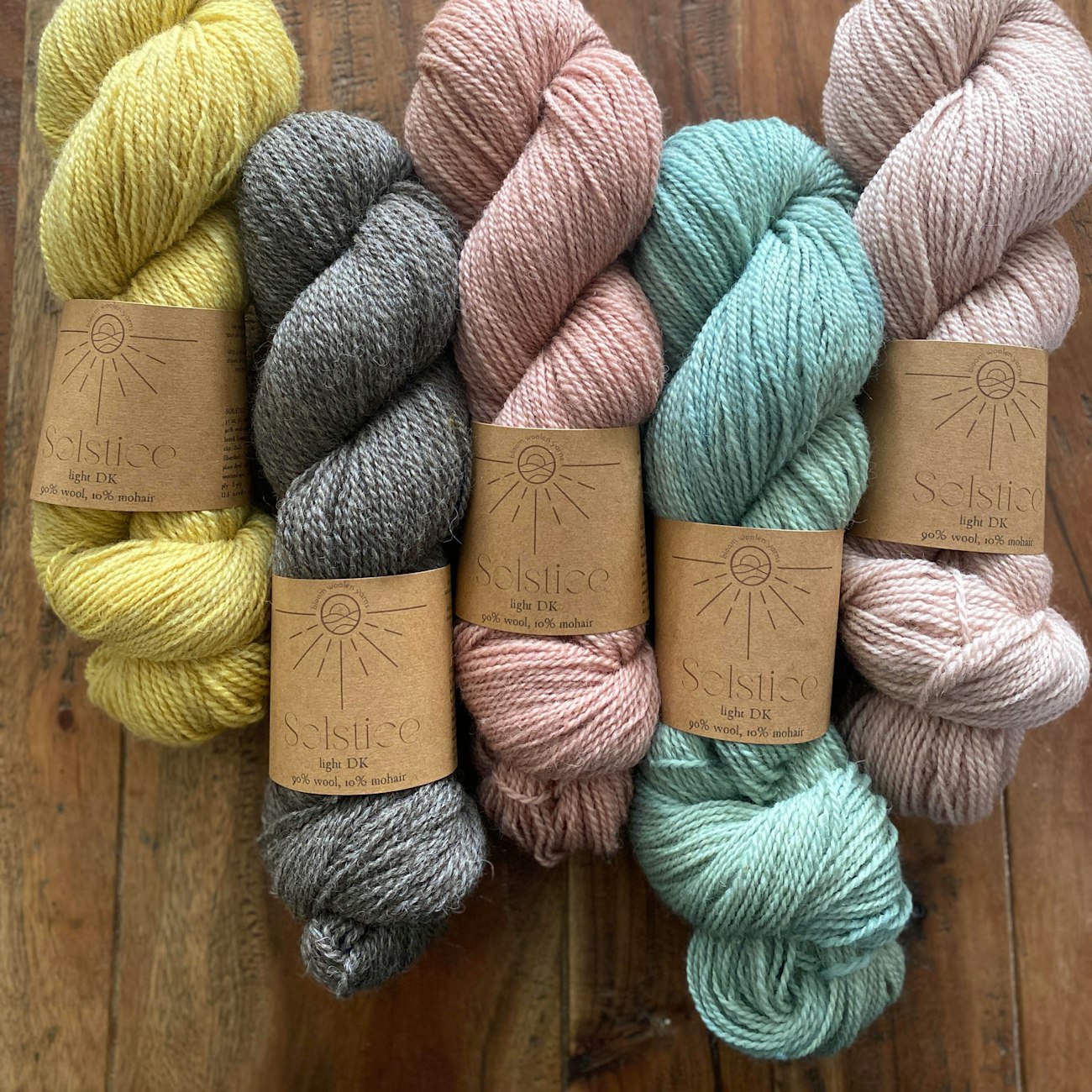 By working closely with the local Western Massachusetts Fibershed, Bloom Woolen Yarns sources ethically produced wool that doesn’t travel halfway around the world to be spun. Photo courtesy of Bloom Woolen Yarns
By working closely with the local Western Massachusetts Fibershed, Bloom Woolen Yarns sources ethically produced wool that doesn’t travel halfway around the world to be spun. Photo courtesy of Bloom Woolen Yarns
 Look for the RWS or NATIVA logo on the skeins of yarn you purchase.
Look for the RWS or NATIVA logo on the skeins of yarn you purchase. 

 Shaniko wool is certified under both the RWS and NATIVA programs. Photo courtesy of Shaniko Wool Company
Shaniko wool is certified under both the RWS and NATIVA programs. Photo courtesy of Shaniko Wool Company  North Bay Fiber now includes the AWA (American Wool Assurance) logo. Photo by Kate Larson
North Bay Fiber now includes the AWA (American Wool Assurance) logo. Photo by Kate Larson  Rodanthe is a worsted-weight non-superwash yarn using Shaniko Wool that is produced by Meridian Mill House. Photo courtesy of Meridian Mill House
Rodanthe is a worsted-weight non-superwash yarn using Shaniko Wool that is produced by Meridian Mill House. Photo courtesy of Meridian Mill House  Merino sheep at Morehouse Farm, a mainstay of fine wool and knitting yarns in New York’s Hudson Valley. Photo courtesy of Morehouse Farm
Merino sheep at Morehouse Farm, a mainstay of fine wool and knitting yarns in New York’s Hudson Valley. Photo courtesy of Morehouse Farm  By working closely with the local Western Massachusetts Fibershed, Bloom Woolen Yarns sources ethically produced wool that doesn’t travel halfway around the world to be spun. Photo courtesy of Bloom Woolen Yarns
By working closely with the local Western Massachusetts Fibershed, Bloom Woolen Yarns sources ethically produced wool that doesn’t travel halfway around the world to be spun. Photo courtesy of Bloom Woolen Yarns